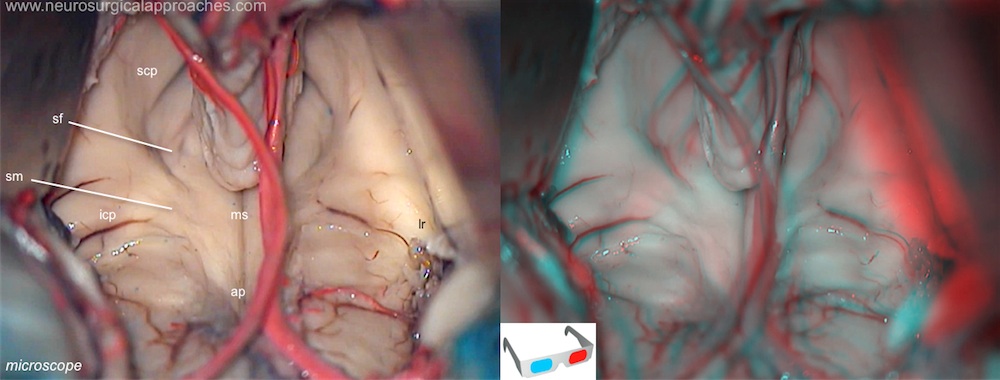Area postrema
The area postrema is a narrow strip of neural tissue located between the vagal triangle and the margin of the rhomboid fossa. It lacks the blood-brain barrier and has been shown in dogs to function as a trigger zone for vomiting. The facial colliculus, lying rostral to the hypoglossal and vagal triangles, is produced by fibres of the facial motor nucleus looping over the abducens nucleus.
Ap: area postrema; icp: inferior cerebellar peduncle; lr: lateral recess; ms: median sulcus; scp: superior cerebellar peduncle; sf: superior fovea; sm: Medullary striae of fourth ventricle.
The human area postrema (AP) is a circumventricular organ that has only been described in cadaveric specimens and animals. Because of its position in the calamus scriptorius and the absence of surface markers on the floor of the fourth ventricle, the AP cannot be clearly localized during surgical procedures.
Signals detected by taste receptors, peripheral osmo-sodium, volume receptors, and arterial/cardiopulmonary baroreceptors reach the nucleus of the solitary tract (NTS) by the VIIth, IXth, and Xth cranial nerves. The other main brain entry of the information related to fluid and cardiovascular balance are the lamina terminalis (LT) and one of the sensory circumventricular organs (CVOs), the area postrema (AP).
